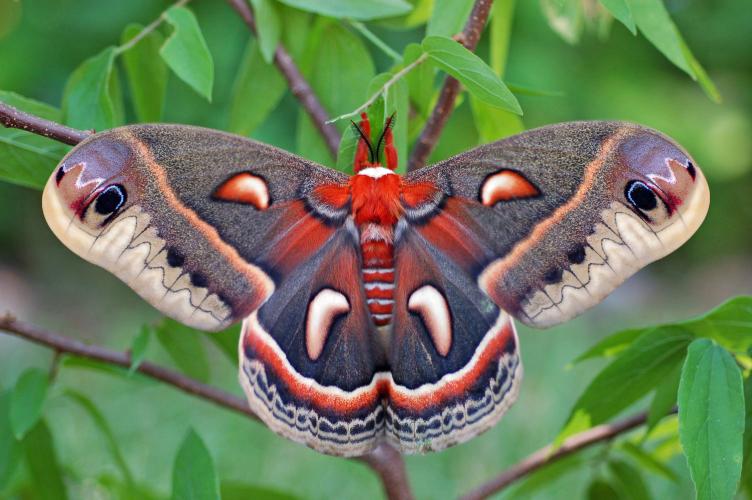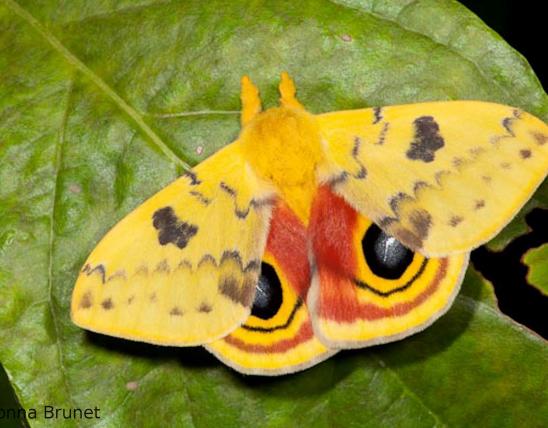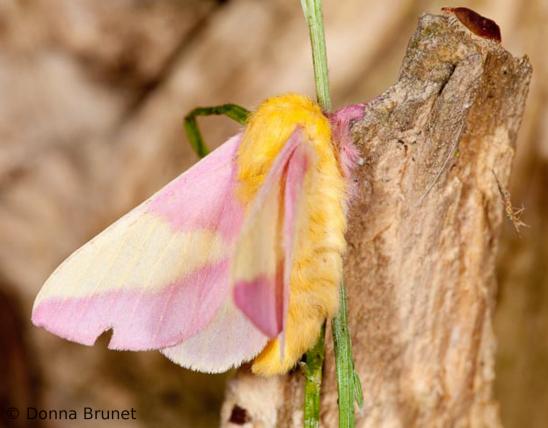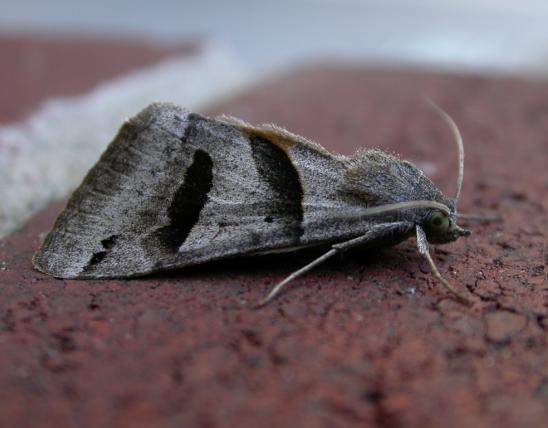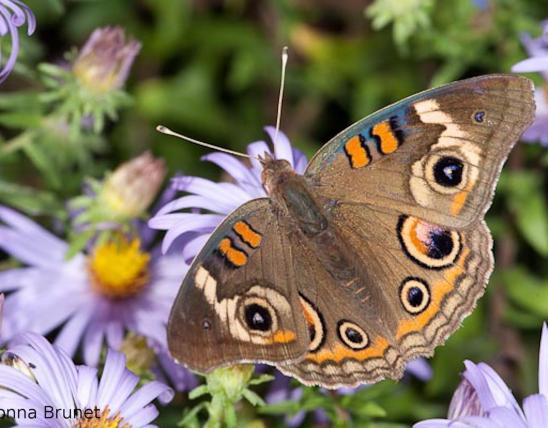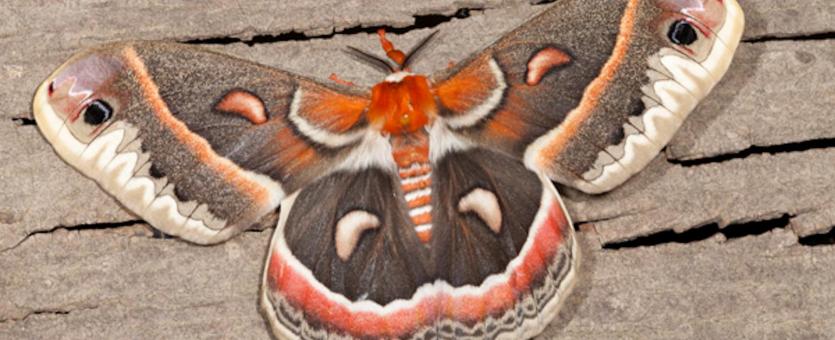
Adult cecropia moths are butterfly-like but have stout, hairy bodies and feathery antennae. The body is red with a white “collar” and white bands on the abdomen. Seen from above, the overall color of the wings is dark brown or gray, with a reddish patch at the base of each forewing. At roughly the center of each of the four wings is a reddish-rimmed, whitish crescent. The postmedian line (the bold line that runs parallel to the outer edge of the wings) is lined with red on its outer margin.
Larvae are very large and they are bluish green. At the top of the second and third thoracic segments there are two round, reddish-orange tubercles with black points. Atop the abdominal segments there is a double row of yellow tubercles. Along the sides are rows of blue tubercles.
Wingspan: 3¾–6 inches.

Statewide.
Habitat and Conservation
Cecropias are most likely to be found in places where forested and open areas meet. With their variety of host trees, cecropias occur nearly anywhere in our state. Maples, for example, grow in parks and backyards yet also constitute a large part of our state’s natural forests. Willows predominate near water, so cecropias can be found near water, too. This nocturnal species is attracted to lights at night. In some regions, numbers are declining due to habitat loss, pesticides, and more.
Food
Larvae feed on more than 20 species of Missouri trees and shrubs, notably various maples (including box elder), willows, cherries, plums, apples, dogwoods, and lilacs. As with other giant silk moths, the mouthparts of the adults are small or absent; the adults live for only a few weeks without feeding, relying on food consumed and stored when they were caterpillars.
Status
Breeding resident.
Life Cycle
Adults fly from early April through June; each moth only lives for about two weeks as an adult. They are nocturnal and in the hours before sunrise emit scents to “call” to potential mates. Eggs are deposited in rows on the leaves of host plants. The eggs hatch in about 2 weeks, and at first, the larvae feed in groups. As the caterpillars grow larger, they disperse and feed as individuals. The cocoons are brownish-gray and are attached by silk along their whole length to a twig in some sheltered, inconspicuous place. Although there is only one brood in our state, the adults emerge over a long period of time and can be found from April through June. This moth overwinters in the pupal stage.
Human Connections
Butterfly and moth collecting is a hobby that many people enjoy, and the cecropia moth is the “jewel” of many collections. Many more people take just as much pleasure out of spying a live moth resting on a backyard tree.
This is one of the giant silkworm moths that may be declining in parts of its range because of parasitism of a tachnid fly that was introduced to battle the invasive, destructive, nonnative spongy moth.
In 1956, researchers reported a major breakthrough in their understanding of insect metamorphosis: they had isolated a hormone that, when it's being produced in large enough quantities, permits a caterpillar to keep growing and repeatedly molting into larger caterpillars ― but when the insect's body stops producing the hormone, it molts into a winged, sexually mature adult. The hormone is now called "juvenile hormone" or JH. The initial 1956 discovery was made using larvae of a cecropia moth!
The name: Cecrops was an Athenian king in Greek mythology. Another Missouri butterfly, the red-banded hairstreak's scientific name also comes from this mythological figure.
Ecosystem Connections
The thousands of different caterpillar species that graze on tree leaves perform a natural pruning service. The adults provide a sizeable meal for their predators. Cecropia numbers are also kept in check by several parasite species. The pupae are eaten by squirrels.

